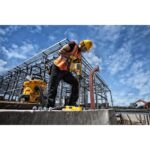Five decades strong: Neumann Steel turns 50
Established in 1970, Neumann Steel, (part of The Neumann Group of companies), celebrates half a century in business and sets its sights on the next five decades. The oldest, family-run reinforcing steel business in the country, Neumann Steel has grown from a tenacious operation to a proudly Australian-owned and operated company, today employing over 220 people. Run by second generation directors – Marc and Paul Neumann along with Mark Shearman – as part of the wider Neumann Group, the steel business has flourished over the decades due to its ability to provide the market with products and service that exceeds customer expectations. “We’ve always innovated, delivering steel solutions to support projects big and small,” said Director Marc Neumann. “In the 1980s we were the first in the country to innovate with rib wire and rib mesh, transitioning it to the domestic market. We’ve always been responsive, serving our customers’ needs, no matter the size of the job.” The company has had a hand in many prolific projects including the Q1 tower, Jewel Resort, the Gold Coast Light Rail, the Toowoomba Range Crossing and more. Neumann Steel are also proud to be the supplier of choice for residential home builders throughout south east Queensland and the Hunter Region. “Over five decades we’ve supplied reinforcing steel solutions to a wide variety of major infrastructure projects and large-scale developments, always with a view to delivering the best product possible for the desired customer outcome.” The resilience required to combat the tumultuous ‘boom and bust’ of the building industry has long established Neumann Steel and the wider Neumann Group as stayers in a volatile sector. General Manager, Kathy Bartley, believes this has to do with the company’s ability to listen to the market and produce products that have constructed a steadfast reputation […]










